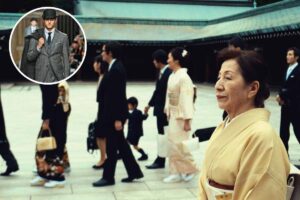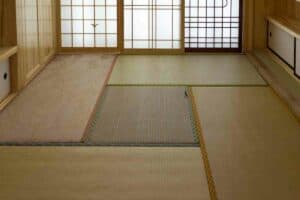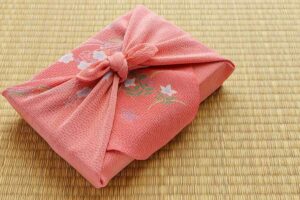If you’ve ever witnessed a traditional Japanese ceremony or ritual, you may have noticed that incense is used.
This practice dates back centuries.
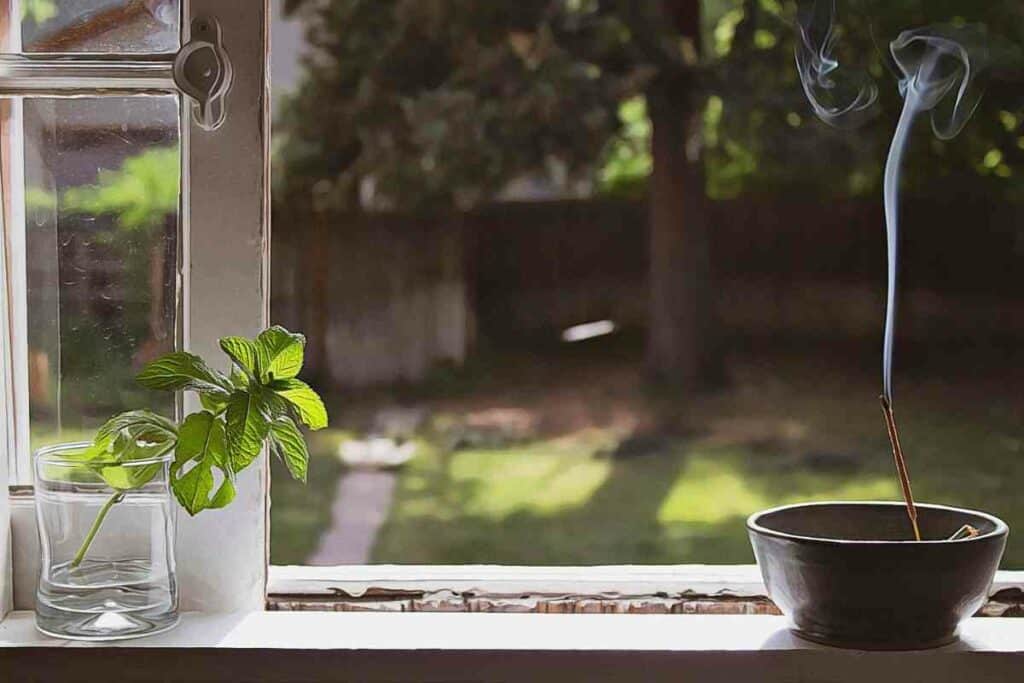
Many people in the West are more familiar with Indian incense, so what exactly is the difference between Japanese and Indian incense?
Let’s find out.
[lasso type=”table” id=”35″ link_id=”6972″]
Table of Contents
Japanese Incense
Japanese incense is known as Koh in Japanese.
It’s a type of incense that originated in Japan and has been used for centuries most often in traditional Japanese rituals and ceremonies.
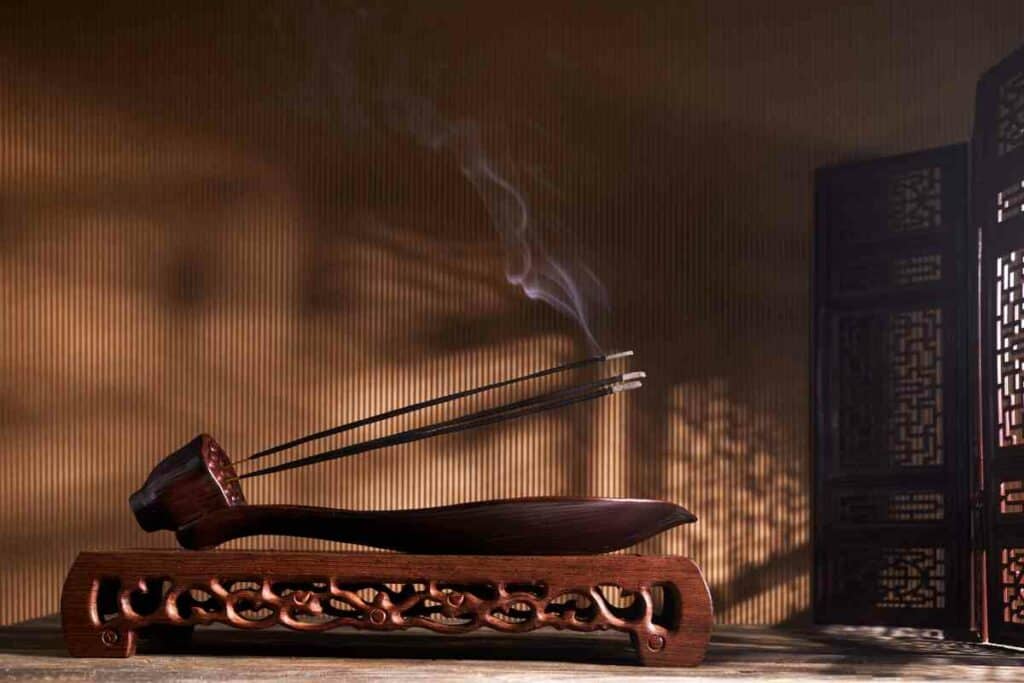
Japanese incense is made from natural ingredients such as:
- sandalwood
- agarwood
- cinnamon
- and other botanicals
These are carefully blended and mixed with natural resins to create a range of fragrances.
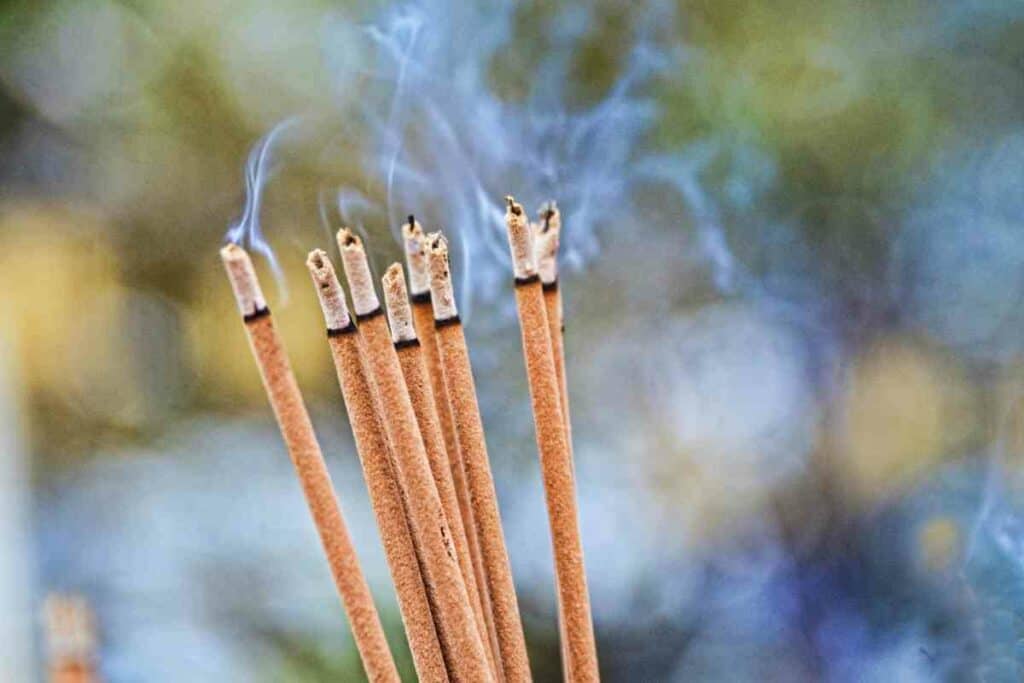
The production of Japanese incense is a meticulous process requiring skilled artisans to measure and blend the ingredients extremely carefully.
This mixture is then kneaded and rolled into a long, thin stick or cone shape.
The incense is then dried for several days before it is packaged for sale.
Japanese incense is known for its refined and subtle fragrances that are designed to soothe and calm the mind. Some of the more popular scents include sandalwood, aloeswood and kyara, which is a type of rare and highly prized agarwood.
Japanese incense is often used in relaxation, meditation and spiritual practices as it is believed to have a purifying effect on the body and mind.
Indian Incense
Indian incense is known as Agarbatti in Hindi.
As you may have guessed, Indian incense originates from India. It has been used in religious, cultural and medicinal practices for thousands of years.
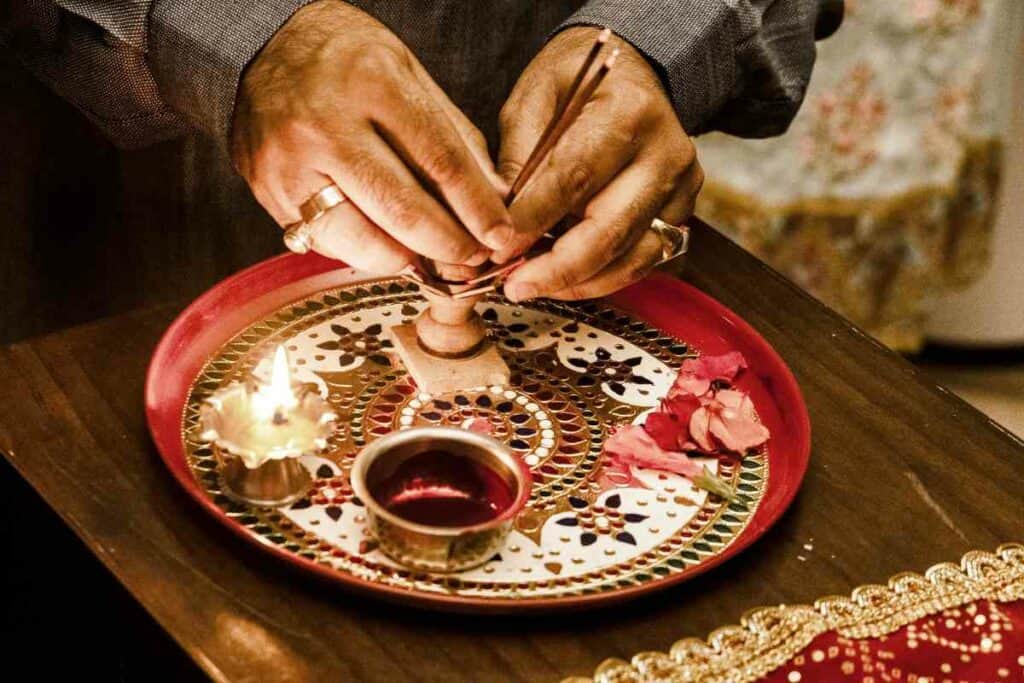
Indian incense is made from a blend of natural ingredients including herbs, spices and resins as well as synthetic oils and fragrances.
Indian incense is produced by mixing powders, oils and resins that are rolled onto a bamboo stick or a cone shape. The incense is dried before packaging it for sale.
Indian incense comes in many fragrances including:
- patchouli
- jasmine
- sandalwood
- and lavender
It is frequently used in spiritual and religious practices such as meditation, puja, and yoga as well as in homes to create a calming, pleasant atmosphere.
Many people believe that Indian incense has therapeutic properties. It is used in Ayurvedic medicine to appease ailments such as stress, anxiety and insomnia.
What is the difference between Japanese Incense and Indian Incense?
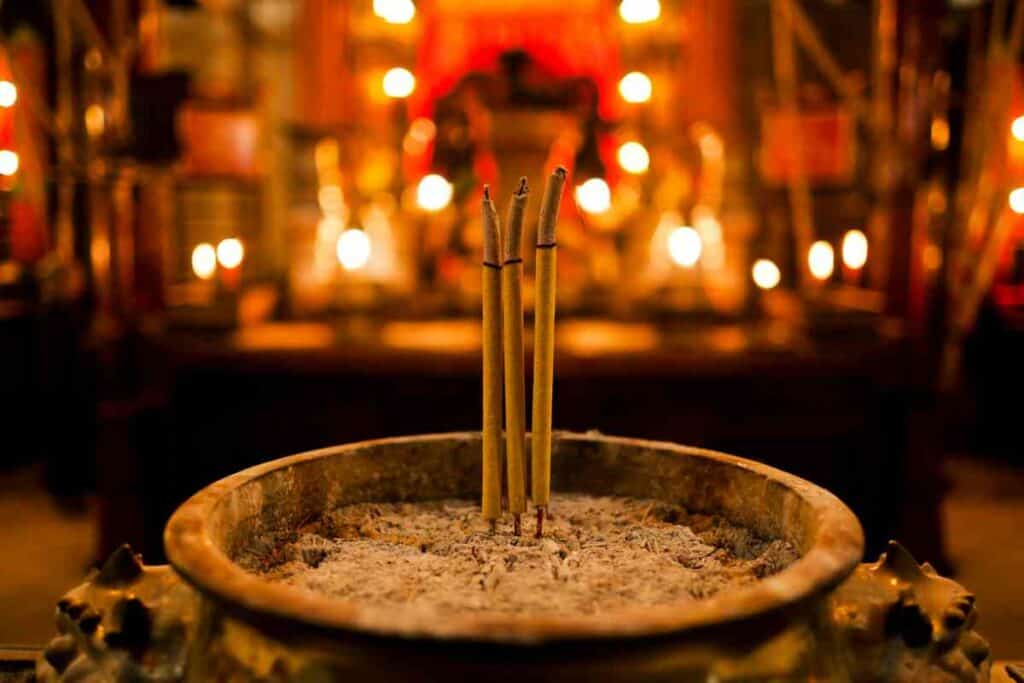
Japanese incense is different from Indian incense in several ways, including:
- the ingredients
- production methods
- and fragrances
1. Ingredients
Japanese incense is typically made from naturally occurring plant-based ingredients including sandalwood, agarwood and cinnamon.
Conversely, Indian incense commonly includes a mix of natural ingredients and synthetic oils and fragrances. Indian incense uses herbs and spices as well as resins.
2. Production Methods
The Japanese and Indian production methods of incense also differ.
Japanese incense is often made by hand using traditional methods. These techniques often include a precise blending of the ingredients followed by a lengthy curing process.
On the other hand, Indian incense is often made by machine and can involve the addition of synthetic ingredients, as mentioned above.
3. Fragrances
Another notable difference between Japanese and Indian incense is their fragrances.
Japanese incense tends to have a more refined and subtle scent whereas Indian incense tends to have strong and exotic fragrances.
Popular Japanese Incense Scents
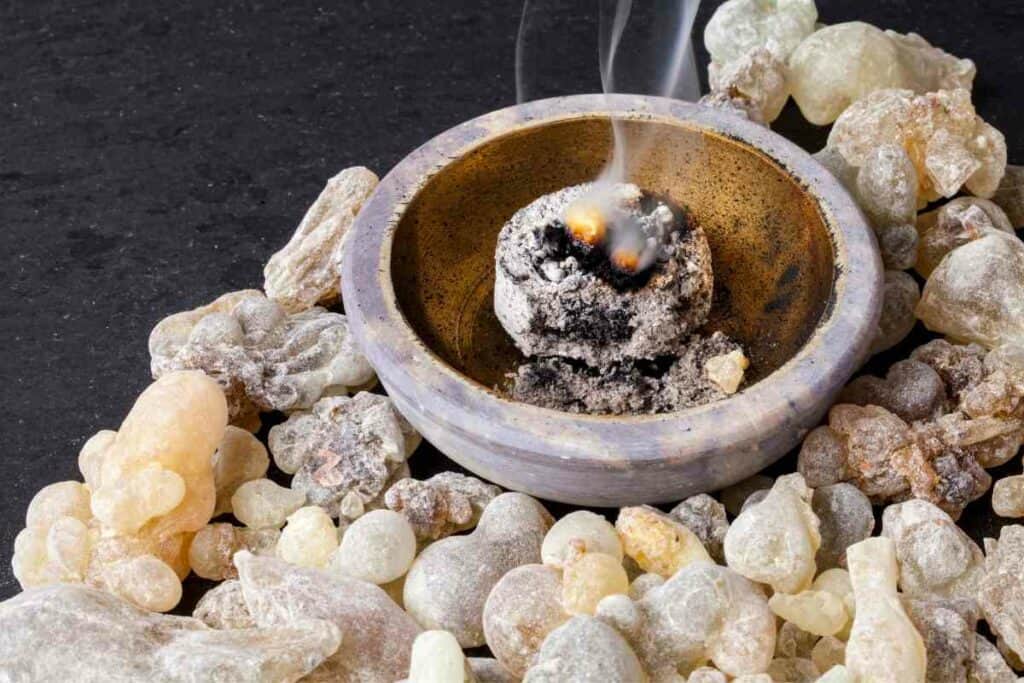
Japanese incense tends to have subtle and refined scents, some of which include:
- Sandalwood (byakudan in Japanese) – This is a warm, woody scent that is grounding and calming.
- Aloeswood (jinkoh in Japanese) – This is a complex and rich scent that is renowned and highly prized in Japan thanks to its spiritual and meditative properties.
- Pine (matsu in Japanese) – This is invigorating and fresh, bringing the forest to the home.
- Cinnamon (keihi in Japanese) – Spicy and warm, cinnamon is energizing and uplifting.
- Frankincense (kunjudo in Japanese) – Earthy and resinous, this one is often used in spiritual and religious practices.
- Cherry blossom (Sakura in Japanese) – A floral scent that is delicate and synonymous with Japan’s arrival of spring.
- Green tea (matcha in Japanese) – An energizing, refreshing scent, this one is reminiscent of the popular Japanese tea.
- Kyara – This scent is rare and highly prized, coming from a type of aloeswood. It has a subtle yet complex scent that is thought to be the most exquisite and refined of all Japanese incense scents.
Why do people prefer Japanese incense?
Many people prefer Japanese incense over other kinds of incense.

Here are some of the reasons why:
- High quality. Japanese incense is known for its high standards of production using traditional methods. Most brands of Japanese incense only have natural ingredients. This diligence makes what many consider to be a superior product and one that burns cleanly and evenly.
- Subtle fragrances. Japanese incense is famous for its calming, understated fragrances, helping to create a meditative atmosphere. Unlike other kinds of incense, its fragrances do not overpower the senses making it the perfect choice for relaxation, meditation and spiritual practices.
- Variety. There is a wide range of fragrances of Japanese incense. Woody and resinous to herbal and flora, there’s an aroma for everyone.
- Cultural importance. Japanese incense has a long cultural significance in Japan. It has been used for centuries in traditional rituals and ceremonies. Many people are drawn to using Japanese incense for these reasons.
- Natural ingredients. Japanese incense is normally made from all-natural ingredients, making it more eco-friendly than other types of incense such as Indian incense which often include the use of synthetic ingredients.
Final Thoughts on Japanese Incense vs. Indian Incense
Overall, in comparison with Indian incense, Japanese incense is said to have subtler, more refined fragrances made from natural ingredients.
Indian incense, on the other hand, has more exotic and spicy aromas and is often made with synthetic additives. Why not try some of each to compare for yourself?
- Best Japanese Knives Top Picks for Every Kitchen
- Japan’s Bold New Trend: Dressing Like a British Gentleman (or at Least Trying)
- 7 Best Japanese Sunscreen Products You Can Buy Online
- 5 Best Japanese Makeup Brushes for a Flawless Finish
- 7 Benefits Of Tatami Mats You Should Know
- The Best Furoshiki Wrapping Cloths: Inspiration, Ideas & Cloths You Can Buy


